|
TRANSLATE THIS ARTICLE
Integral World: Exploring Theories of Everything
An independent forum for a critical discussion of the integral philosophy of Ken Wilber
 David Christopher Lane David Christopher Lane, Ph.D.
Professor of Philosophy, Mt. San Antonio College Lecturer in Religious Studies, California State University, Long Beach Author of Exposing Cults: When the Skeptical Mind Confronts the Mystical (New York and London: Garland Publishers, 1994) and The Radhasoami Tradition: A Critical History of Guru Succession (New York and London: Garland Publishers, 1992). SEE MORE ESSAYS WRITTEN BY DAVID LANE
In Search of
the Perfect Coke
David Lane
But perhaps the most intriguing implication of Borges' narrative is that anything can serve as an unforgettable hierophany.
My mother was a very generous person. She was, however, a horrific cook. I mean her prepared meals were so bad that the deepest scars of my childhood are not connected to my father's severe alcoholism but to Tuesday night's roast beef. My mom was from the old Germanic school where everything on the plate had to be eaten, even if the offerings looked liked leftovers from a fire bombing.
Of course I tried my best to somehow get the food down, ranging from putting it in my dog Kubla's mouth (after one whiff, she ran to the backyard) to hiding it under a napkin or, worse yet, placing it folded up in my Catholic elementary school's uniform pants. Unfortunately my hurried methods only exacerbated the situation since my mother, taking a cue from the movie Stalag 17, invariably discovered my escape hatches and promptly sat me down again until I ate every last morsel.
I say all of this as a prelude to some of the happiest memories of my childhood. This was when on Friday nights my mother chose not to cook and we would end up scarfing down some take-out from Bob's Big Boy or a cheese pizza from the nearby Pizza Man, He Delivers.
To top it off, my two brothers and my only sister were each allowed to have one 12 ounce bottle Coke alongwith some buttered popcorn. This was in the very early 1960s, where we would all sit around the television and watch first run episodes of the Flintstones, the Twilight Zone, and my all-time favorite, Johnny Quest.
It was a supremely blissful time for me and I think it was right there and then that I began my lifelong love affair with Coca Cola. As almost any psychologist will tell you, food has an emotional component for most homo sapiens (both postive and negative) and I think it is little wonder that these Friday respites represented something magical to me. And the ultimate magical moment was when I would drink that wonder of carmel and sugar and carbonation.
Indeed, my fondness for Coca Cola was such that my older brother and I would often get into philosophical conversations about it, ruminating whether—and here Plato's Ideal Forms played a part—there existed such a thing as a Perfect Coke.
We had noticed over the years that not all Cokes tasted the same. For instance, the steel can versions of Coke (aluminum had yet to be introduced) tended to have a rusty taste to them, especially if they were buried in ice for too long. Even the bottle versions suffered from a metallic funkiness if the cap got too much moisture.
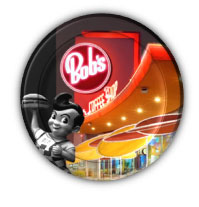
The tap Coke was also very inconsistent. Sometimes the carbonation would be less than optimal and at other times the sweetness was absent. Most of the time if we were thirsty enough we just ignored the subtle and not so subtle gradations in Coca Cola. But the more we became addicted to the stuff the more important it became to get the drink just right.
I think most Coca Cola drinkers would agree that there is an aggregrate of key markers that result in a truly magnificient Coke. First and foremost on my list would be the burn. This has a two-fold aspect: sufficiently high carbonation coupled with a very slight bitter edge. It is this latter aspect which distinguishes Coca Cola from Pepsi, a challenger lacking that two pronged attack. Second, a great Coke has to have the right amount of sweetness and effervensce. And, third, something which goes without saying is that the Coke has to be properly chilled.
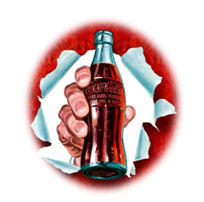
All three of these factors, however, have to be enveloped into a larger context which can be crucial for a Coke to have that transcendent quality. It all comes down to when and where and with what. The right time, the right place, but most importantly, the right food. I have found over the years that a Coke tastes best with foods that are dry, salty, spicey, or, best yet, all three. My personal favorite accompaniment to a Coke is a falafel pita sandwichon . In point of fact I simply cannot eat a falafel without a burning Coke along with it.
For most of my childhood I had a fair share of good and bad Cokes, but something genuinely remarkable happened during my 15th year that forever changed my understanding of what a Coke could be and what it could ultimately signify.
August 20, 1971
The liquid hierophany occurred on what was an otherwise nondescript day. My brother and I had surfed at Trancas beach, which was just north of Malibu, and on our drive back into the Valley we were overwhelmed by the onslaught of a deepening heat wave. We were, unfortunately, completely out of disposable cash so we couldn't quench our parched throats.
As we entered into our backyard, our mother shouted that she wanted us to run some errands for her (probably the last thing one wants to hear after a good day of surfing). She gave us a laundry list of things to pick up at Fedco in Van Nuys. Fedco was in many ways a forerunner of the large warehouse stores so popular today, such as Costco and Sam's Club. We belly ached and somehow managed to manipulate a few extra quarters from our Mom so we could buy a Coke while we were hunting for her numerous kitchen items.
Joe and I were by this moment beyond thirsty so we were anxious to get some bubbling nectar. However, Fedco is not exactly known for having the best Cokes so we were not expecting much.
Immediately and without any warning whatsoever I felt transported into another realm.
As I was walking near the Deli just inside Fedco, I saw a young blonde haired girl behind the counter serving drinks and sandwiches to a line of customers. Yet what really caught my eye was not her obvious beauty but the bubbly flow coming out of the tap. For some strange reason I sensed that this fountain Coke held some promise. I immediately told my brother Joseph that we need to make a beeline to the counter. He too saw the beautiful young girl, but soon focused on the real object of our affection, the liquid elixir.
I can still remember the medium sized white cup, accentuated with green lines and a flowered pattern, that the young girl filled with crystal clear ice cubes—small square cubes that in their transparency seemed to be designed to punctuate any medium that they joined. But what struck my eye even more was when the girl placed the cup under the tap and let the Coke pour in. The carbonated stream was unlike anything I had ever seen.
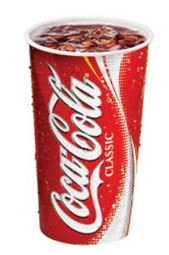
She handed the first Coke to my brother and then repeated the ritual and placed in my hands the second cup of Coca Cola. My brother and I nodded at each other and then proceeded to take our first sip. Immediately and without any warning whatsoever I felt transported into another realm. The taste was so exquisite that I couldn't speak, as if each carbonated bubble was a world of bliss all its own. I was in a state of liquid ecstasy.
I turned to look at my brother and saw that tears were running down his cheeks. Not from the burn, mind you, but from the absolute wonder of the drink. My brother and I had, without any doubt whatsoever, finally found the Perfect Coke. We hugged in a state of euphoria.
This Coke was so good that we hesitated to take another sip too quickly, so that we may savor each and every drop of this divine aqua. In all of the hundreds of Cokes I had drank in my lifetime up to that time I had never drank anything that even came close to that one at Fedco. It was, in a word, transcendent.
Yet, this particular Coke represented something more than just a drink. It was, to cite the words of Mircea Eliade, a sacred hierophany, an ordinary object within the normal waking state which reveals something that wholly transcends it—a rupture of sorts between this world and the next. As silly as this may sound at first, the fact remains that any simple object (a stone, say) can under the right conditions and in the right context serve as a talisman of the Mystery that underlies our existence.
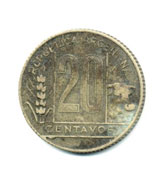
Jorge Borges illuminated this idea in his famous short story, The Zahir, where he wrote that any object, even a mere coin, can have the power to bewitch its beholder or owner. As Borges wrote,
“In Buenos Aires the Zahir is a common twenty-centavo coin into which a razor or penknife has scratched the letters N T and the number two; the date stamped on the face is 1929. (In Gujarat, at the end of the eighteenth century, Zahir was a tiger; in Java a blind man in the Sukarta mosque who was stoned by the faithful; in Persia, an astrolabe that Nadir Shah ordered thrown into the sea; in the prisons of Mahdi, in 1892, a small compass, wrapped in a shred of cloth from a turban that Rudolf Karl von Slatin touched; in the synagogue of Cordoba, according to Zotenberg, a vein in the marble of one of the twelve hundred pillars; in the Jewish quarter of Tetuan, the bottom of a well.)”
Given that anything can serve as a Zahir, Borges pondered further on its philosophical implications,
“Tennyson said that if we could but understand a single flower we would know who we are and what the world is. Perhaps he was trying to say that there is nothing, however humble, that does not imply the history of the world and its infinite concatenation of causes and effects. Perhaps he meant that there is no deed, however humble, that does not imply universal history and its infinite succession of effects and causes. Perhaps he meant that the visible world is complete in each representation, just as Schopenhauer tells us that the Will expresses itself entire in every person. The Kabbalists believed that man is a microcosm, a symbolic mirror of the universe; as would everything, according to Tennyson. Everything, even the unbearable Zahir.”
In this way, peculiar and twisted as it may at first appear, the Perfect Coke that my brother and I discovered on August 20, 1971, in Van Nuys, California, became a Zahir for me, a touchstone by which to envision and revision past, present, and future events. I didn't realize this at first, but like Borges in his story it dawned on me as the id�e fixe took hold of my imagination. As Borges explains,

“In Arabic, 'Zahir' means visible, evident; in that sense, it is one of the ninety-nine names of God; in Muslim countries, the masses use the word for 'beings or things which have the terrible power to be unforgettable, and whose image eventually drives people mad.' Its first undisputed witness was the Persian polymath and dervish Lutf Ali Azur; in the corroborative pages of the biographical encyclopaedia titled Temple of Fire, Ali Azur relates that in a certain school in Shiraz there was a copper astrolabe 'constructed in such a way that any man who looked upon it once could think of nothing else, so that the king commanded that it be thrown into the deepest depths of the sea, in order that men might not forget the universe.'”
But perhaps the most intriguing implication of Borges' narrative is that anything can serve as an unforgettable hierophany. Thus can Borges have Al-Yemeni exclaim that,
“there was no creature in the world that did not tend toward becoming a Zahir.”
At the tender age of 15, the Perfect Coke became more than just a fantastic occasion. It became a signpost to wake up to the almost infinite possibilities that life can proffer. The proviso here, of course, is that one must remain vigilantly and acutely aware that underlying every nano event there is a matrice of intersecting probabilities, such that at any turn, at any moment, the unexpected can happen: a perfect wave, a perfect sunset, a perfect Coke.
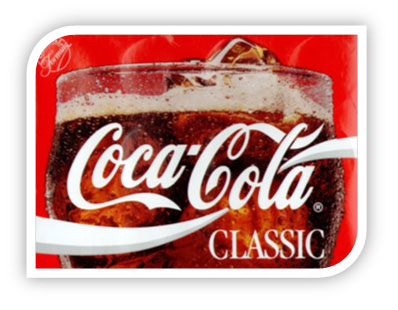 __________________________
__________________________
The Secret Ingredients to Perfection?
The recipe:
- Fluid extract of Coca: 3 drams USP,
- Citric acid: 3 oz,
- Caffeine: 1 oz,
- Sugar: 30 (unclear quantity),
- Water: 2.5 gal,
- Lime juice: 2 pints, 1 quart,
- Vanilla: 1 oz,
- Caramel: 1.5 oz or more for color
The secret 7X flavor
- (use 2 oz of flavor to 5 gals syrup):
- Alcohol: 8 oz
- Orange oil: 20 drops
- Lemon oil: 30 drops
- Nutmeg oil: 10 drops
- Coriander: 5 drops
- Neroli: 10 drops
- Cinnamon: 10 drops
Excerpted from: http://www.thisamericanlife.org/radio-archives/episode/427/original-recipe
|
 David Christopher Lane, Ph.D.
Professor of Philosophy, Mt. San Antonio College Lecturer in Religious Studies, California State University, Long Beach Author of Exposing Cults: When the Skeptical Mind Confronts the Mystical (New York and London: Garland Publishers, 1994) and The Radhasoami Tradition: A Critical History of Guru Succession (New York and London: Garland Publishers, 1992).
David Christopher Lane, Ph.D.
Professor of Philosophy, Mt. San Antonio College Lecturer in Religious Studies, California State University, Long Beach Author of Exposing Cults: When the Skeptical Mind Confronts the Mystical (New York and London: Garland Publishers, 1994) and The Radhasoami Tradition: A Critical History of Guru Succession (New York and London: Garland Publishers, 1992).




